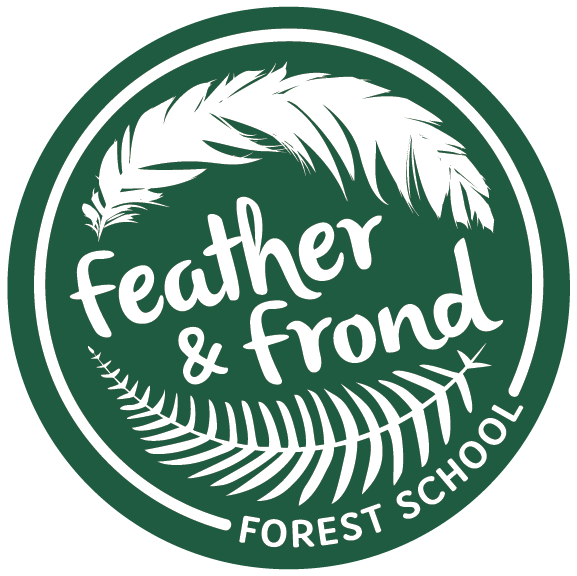
Our Approach
Our curriculum is rooted in the 8 Shields model, based on the work of Jon Young.
Organized around the medicine wheel, each direction invites us into a unique relationship with the land and a doorway into nature connection:
Birds: The Messengers of the Wilderness [NE]
Hazards: A Call to be Alert and Use Common Sense [E]
Motivating Species: Things to Catch, Eat, Climb and Tend [SE]
Mammals: And Other Hard to See, Yet Totally Track-able Critters [S]
Plants: Nature’s Grocery Store and Medicine Cabinet [SW]
Ecological Indicators: How it All Works Together [W]
Heritage Species: Wisdom of the Ancestors [NW]
Trees: Tools of Human Survival [N]
We honor developmental stages and offer a thoughtful balance of structure and freedom.
Our programs follow a steady rhythm rooted in connection, curiosity, and play. A typical day at forest school looks like this:
Games and seasonal crafts to start the day
Songs, movement, and gratitude in Moon Bird Meadow
Storytelling under Mama Maple
Forest adventures, free play, nature-based projects and/or time in Guilds (interest-based learning groups)
Lunch at favorite spots like Coyote Woods or Flying Squirrel Slope
Reflection and sharing through the Story of the Day
In our wild classroom, the knowing is in the doing.
We wiggle our toes in the dirt, taste dandelions, follow feathered friends, and let curiosity lead the way. As William Butler Yeats said, “Education isn’t the filling of a pail, but the lighting of a fire.”
We light that fire by tapping into child’s passions and practicing hands-on skills, such as:
Fire-making, whittling, and animal tracking
Wild cooking, basket weaving, and coal-burned spoon making
Bird language, plant medicine, and scout-style stealth
Storytelling, theater, and nature-based play
Respect and reciprocity for ourselves, one another, and the natural world are at the forefront of our teachings.
We teach these values by leading by example. So, if we're out harvesting Stinging Nettles together, don't be surprised when you see us gently yanking out a few strands of hair from our heads and offering them to the plants to say thanks and give back! This simple act of gratitude honors the exchange and reminds us that we’re part of a larger web.
We believe that everything in nature has something to teach us.
Even the ground-nesting wasps that leave a painful sting, the relentless rodents who wiggle their way into our homes, and the Devil's Club with unsavory spikes. What wisdom can we learn from these creatures? What "superpowers" do they possess that allow them to survive in the wilderness? How can we demonstrate empathy towards these beings and learn from their resiliency? We lean into these questions with our students, inviting curiosity, compassion, and insight through every buzzing, prickly, and unexpected encounter.
We listen to the deep longing in every human heart: to be seen, heard, and free to express who they truly are.
Each person carries gifts meant to be shared with the world. How can we dance together to lift each individual while strengthening the whole? How can we shape a space where everyone feels safe, seen, soothed, and secure?
These questions guide our days in the forest, helping us listen more deeply, lead more gently, and nurture a community where authentic belonging grows wild and true.
We nurture children's innate resilience and capability, knowing that they thrive when held in safety and trust.
We support each child by tuning into their nervous system and individual needs. Rather than managing behavior from a “top-down” lens, we take a “bottom-up” approach—understanding that feelings and behaviors stem from the whole nervous system.
As Gabor Maté says, “The most important job of the school is to promote healthy brain development.” We do this by offering co-regulation and cues of safety.







